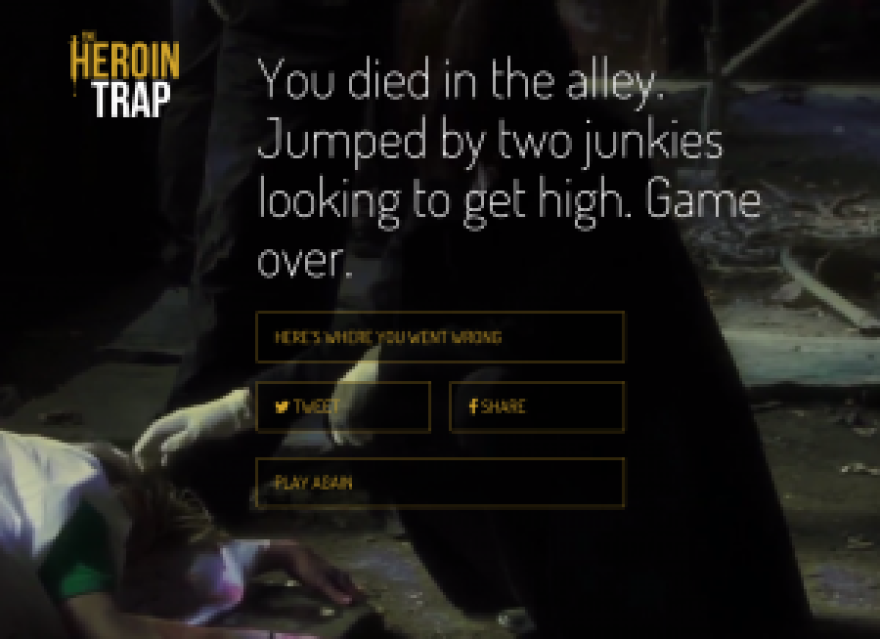Delaware is in the middle of a Heroin epidemic.
Last year, there were 36 heroin-related deaths in New Castle County, and according to Police Chief Elmer Setting, the majority of those who died were teenagers or young adults.
On Thursday, county officials unveiled a new anti-heroin campaign called The Heroin Trap. The goal is to convince teenagers that by trying heroin even once, the result will be death, prison or a lifetime of recovery.
New Castle County’s new anti-heroin video ad features a young man with a needle in his arm, sprawled out on the floor while the camera shows childhood photos and a typical teen bedroom. The ad is part of a much larger media campaign that targets teens where they live - on Facebook and through an interactive web game.

Today, New Castle County Police Officer Tracey Duffy showed off the brand new game.
"After you log in, this is the screen that you’ll see.So you just scored your first bag of heroin, what should you do? And it gives you the option, to smoke it, snort it, shoot it or toss it," she said.
Officer Duffey explained that should the player choose option C -- to shoot heroin -- he will eventually lose the game. A finish screen pops up informing the teen he’s died in an alleyway or been sent to prison. And if that teen plays the Heroin Trap game while logged on to Facebook, things get personal.
If you have your parents labeled in your Facebook, not everybody does, but if you did, it’ll say “steal money from your mom” and put their name," said Heroin Trap ad campaign Manager, Mike Cordrey. He explained that personalizing the interactive game will help teens visualize ruining their relationships if they became heroin-dependent.

Kids will also see the ad campaign IRL (In Real Life) on the sides of buses and before movie screenings at the Penn Cinema in Wilmington.
Cordrey says the ultimate goal behind the ad campaign is to scare teens straight.
"We wanted to be as real and as hard hitting as possible, and in fact some of the media outlets thought we’d taken it a little too far. So you know, no egg in a frying pan."
Cordrey’s referring to the infamous 1980s anti drug ad, with the narration "this is your brain, and this is your brain on drugs." That ad, he says, relied on an abstract metaphor, but this new campaign is gritty, dark and realistic. And it performed well in teen focus groups.
It’s unclear whether fear-based campaigns always work on teenagers, because research shows that the teenage brain tends to be impulsive and gravitate toward experimentation and testing boundaries. Some substance abuse prevention organizations actually view scare tactics as ineffective, like Prevention First, an Illinois nonprofit.
But Police Chief Elmer Setting says this initiative is worth pursuing - that until now there’s been a severe lack of education and open dialogue around heroin abuse. He also argues that similar campaigns have reduced other harmful activities.
"If we can teach our children successfully to put on their seatbelts, if we can teach our children about alcohol abuse, then we can certainly be honest that we’re immersed in a heroin epidemic, and a dose of heroin is five dollars a bag," he said.
New Castle County Executive Tom Gordon said that he was proud to be part of an effort to address the pervasive addiction.
"I hope it does impact our youth, not to take that first shot, snort, shoot of the most dangerous drug in the world. Heroin."


